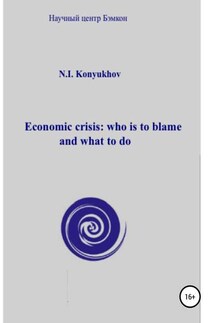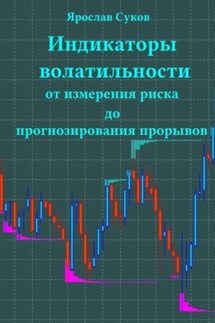Psychoeconomics: globalization, markets, crisis - страница 12
Summary of the Chapter
The economic and historical development of mankind is not only an accumulation of material assets, but also a change in people’s culture. One of the most important moments of these changes is the change in the system of dynamic stereotypes, the psychotypes of a population, in the economically active population, the elites. These changes are regular, and related to the degree of psychological and social compatibility of the different psychotypes in the course of life of several generations. The most unfavorable outcome, post-postresonators in the elite and the economically active population, leads to psychoeconomic crises of special depth. The majority of the world’s countries are now living through this crisis.
References
Reich, Robert B. Aftershock: The Economy of the Future. Moscow, Career Press. 2012, p.193.
Konyukhov, N.I., Arkhipova, O.N., Konyukhova, E.N. Pyschoeconomics. 2nd edition. Мoscow, 2012. 540p.
Chapter 3. Globalization as a process of synchronizing the psychoeconomic changes in the world
It is important to evaluate the measures any country takes to optimize economic and social development against the processes on which the effectiveness of those measures depends. This above all means understanding the place of a given country in the international division of labor and the effect of globalization on the country’s development.
Globalization is a fact of life in the modern world, and involves the synchronization of many economic, social, psychological, technological and other factors. This introduces qualitative changes in the development of the contemporary world, including psychoeconomic events.
3.1 Synchronization of psychoeconomic phenomena in the contemporary world and its reflection in economic indicators
Carl Jung expressed an unusual idea for his time, namely that the psychotype, or drives that oppose conscious drives, forms within the unconscious. But over time, the unconscious and the conscious exchange places. Subsequent research has shown that this idea needs some restatement, namely, that drives form in the unconscious that are opposed to conscious drives, especially if the conscious drives are not reliable. Yes, that’s how we’re arranged.
Our unconscious senses the incorrectness, the imprecision, the one-sidedness of the conclusions reached by consciousness, and it builds up a need to make these conclusions precise, including by denying their opposite. In its own way, this mechanism is rational, and at times it is astonishing in its precision, prognostic ability, and accuracy. The fact is, our consciousness is single-plane and factorial. By and large the determinants of socioeconomic development have a heterogeneous, multifactorial, and cumulative nature. Some microfactors have a tendency to escalate into factorial, leading causes, so it is periodically necessary to change opinions, outlooks, and mindsets. This change is cyclical and tied closely to solar activity. The mechanism that opens and closes nerve cells works better precisely at times of increased solar activity, and this is valid for everyone. Therefore, during periods of economic globalization we also get harmonic curves of change across very different economic indicators.
In a period of increased solar activity, human thought and the thoughts of market players change more often. At times, this takes the form of projection in regard to understanding the factors of economic development, while at others, it takes the form of a sharp shift in management decisions, namely those that can affect the condition of the market.









